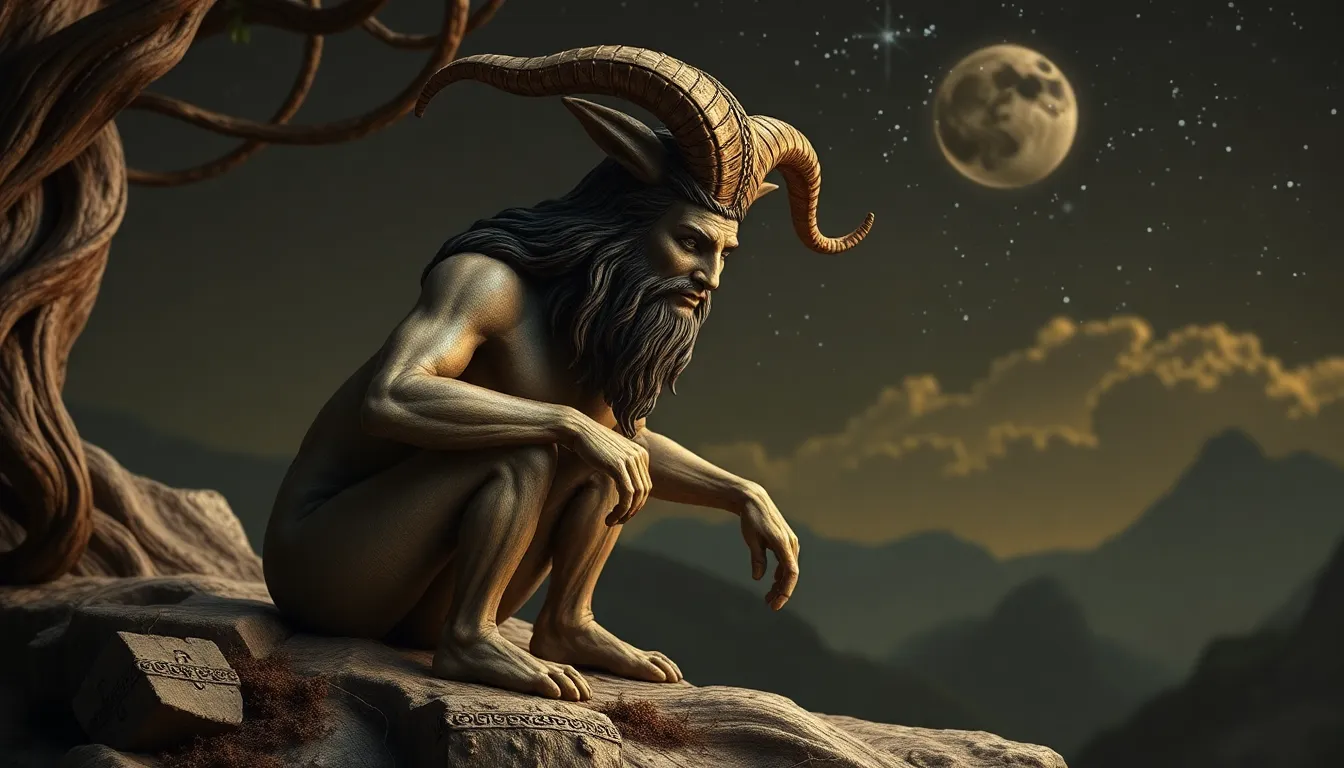The Legacy of Satyrs in Children’s Folklore Around the World
I. Introduction
Satyrs, creatures from Greek mythology, are often depicted as half-human, half-goat beings associated with the god Dionysus. They are known for their playful and mischievous nature, as well as their deep connection to nature and music.
These mythological figures have transcended their ancient origins, finding a place in various folklore traditions around the world, particularly in children’s stories. The presence of satyrs in folklore is not merely a reflection of their mythological roots but also highlights their role in teaching moral lessons and fostering a love of nature among young audiences.
Studying satyrs in children’s stories provides valuable insights into how ancient mythologies adapt and evolve, influencing cultural narratives and the values imparted to future generations.
II. Origins of Satyr Mythology
The origins of satyr mythology trace back to Ancient Greece, where they were often depicted as companions of Dionysus, embodying the spirit of revelry and the untamed aspects of nature.
With the spread of Roman culture, satyrs were integrated into Roman mythology, where they were often conflated with fauns, another nature spirit. This cross-cultural exchange enriched the depictions of these beings, making them more relatable and accessible.
Over time, the themes associated with satyrs transitioned from adult-oriented narratives in mythology to more child-friendly tales in folklore. This shift allowed satyrs to be embraced in stories that emphasized their playful and innocent characteristics, making them suitable for younger audiences.
III. Satyrs in European Folklore
In Europe, satyrs have been represented in various folklore traditions, each culture interpreting them through its unique lens.
- Celtic Tales: In Celtic mythology, similar beings known as ‘faeries’ or ‘green men’ often share characteristics with satyrs, emphasizing their connection to nature and the supernatural.
- Italian Fables: Italian folklore features satyr-like figures in stories that often focus on their mischievous nature, teaching lessons about the consequences of folly and indulgence.
- Comparative Analysis: Across different European cultures, satyrs are depicted with varying traits, from playful tricksters to wise guardians of the forest, showcasing the rich tapestry of satyr lore.
IV. The Role of Satyrs in Nature and Play
Satyrs are often seen as symbols of nature, embodying the wild and untamed aspects of the natural world. Their presence in children’s tales serves several purposes:
- Symbolism of Nature: Satyrs represent the beauty and chaos of nature, encouraging children to appreciate the outdoors and the environment.
- Themes of Mischief: Many stories featuring satyrs include elements of mischief and playfulness, illustrating the importance of joy and laughter in childhood.
- Guardians of the Forest: In some narratives, satyrs act as protectors of the forest, imparting valuable lessons about respecting nature and understanding its rhythms.
V. Satyrs in African Folklore
In African folklore, there are mythological creatures that share similarities with satyrs, often embodying the spirit of nature or mischief.
- Similar Creatures: Many African traditions feature beings that resemble satyrs, such as trickster figures that engage in playful antics while teaching moral lessons.
- Morals in Stories: Stories that incorporate satyr-like beings often convey important values, such as the significance of community, respect for nature, and the consequences of one’s actions.
- Cultural Significance: These figures serve to connect children with their cultural heritage, emphasizing the importance of storytelling in imparting wisdom and values.
VI. Asian Interpretations of Satyr-like Creatures
Across Asia, there are various interpretations of satyr-like creatures in folklore, showcasing the universal themes of nature and mischief.
- Indian Folklore: In Indian mythology, figures such as the ‘Gandharvas’ share characteristics with satyrs, often depicted as musicians and nature spirits in harmony with the wilderness.
- Chinese Culture: Similar beings in Chinese folklore, like ‘Huli Jing’ (fox spirits), display playful traits and a connection to nature, enriching the narrative landscape.
- Influence on Literature: These figures have influenced children’s literature, often serving as characters that teach lessons about virtue, balance, and respect for the environment.
VII. Modern Adaptations and Representations
In contemporary children’s literature and media, satyrs have evolved significantly, reflecting changing societal values and interests.
- Contemporary Literature: Modern books often depict satyrs as friendly, whimsical characters that engage in adventures, promoting themes of friendship and curiosity.
- Evolution of Character: Satyrs have transformed from purely mythological beings to relatable characters in animated films, television shows, and children’s books, appealing to today’s younger audiences.
- Impact on Understanding: Through these adaptations, satyrs serve as a bridge for children to connect with ancient mythologies and appreciate the importance of nature in their lives.
VIII. Conclusion
In summary, satyrs hold a unique and significant place in children’s folklore across cultures. Their playful nature and connection to the wilderness resonate with young audiences, teaching them valuable lessons about life and nature.
The enduring legacy of satyrs illustrates how these ancient beings continue to inspire stories that engage and educate children, fostering a sense of wonder and respect for the world around them.
As we look to the future, exploring the integration of folklore and mythology in children’s narratives will provide further insights into cultural values and the timeless appeal of figures like satyrs.




